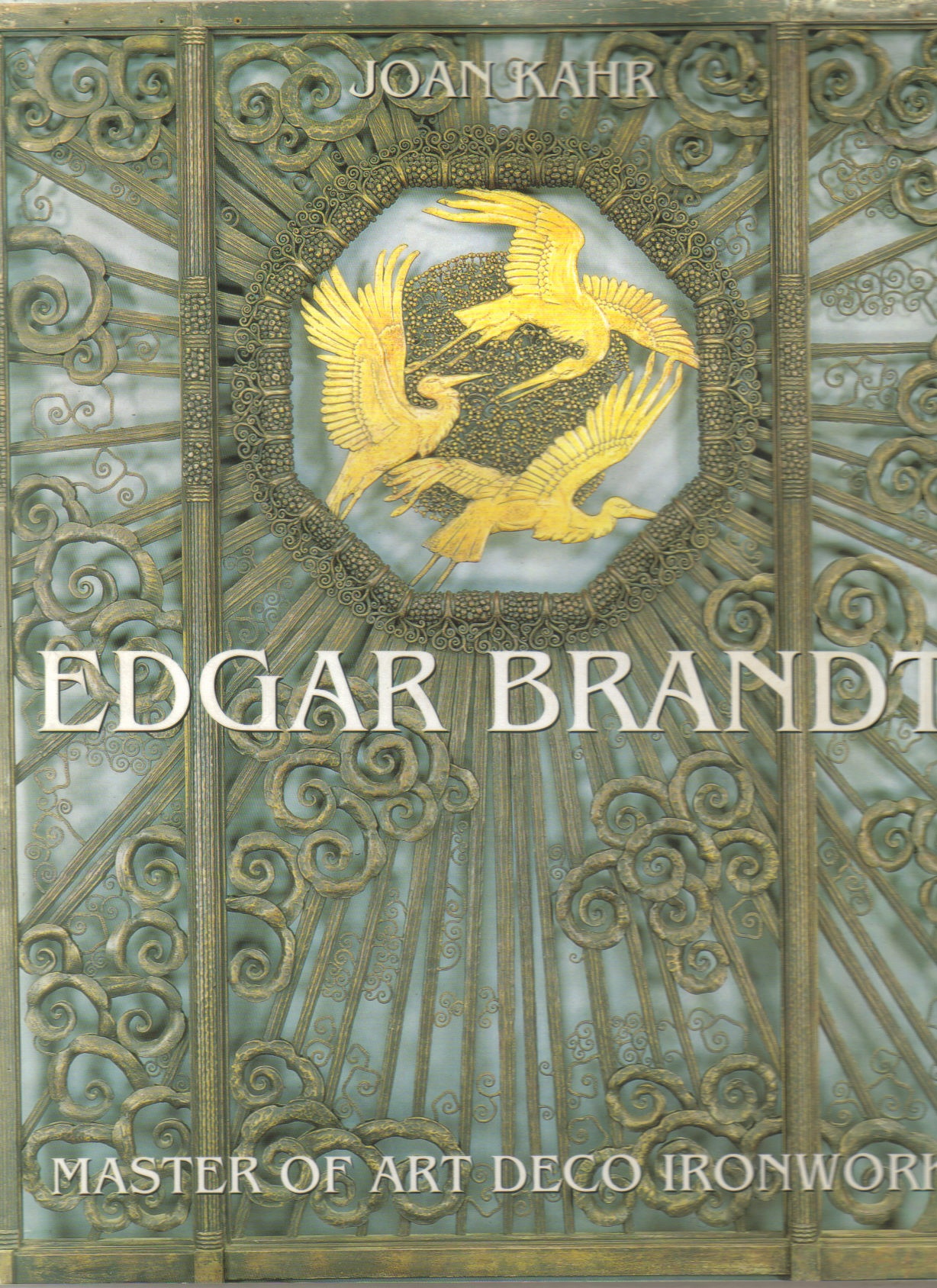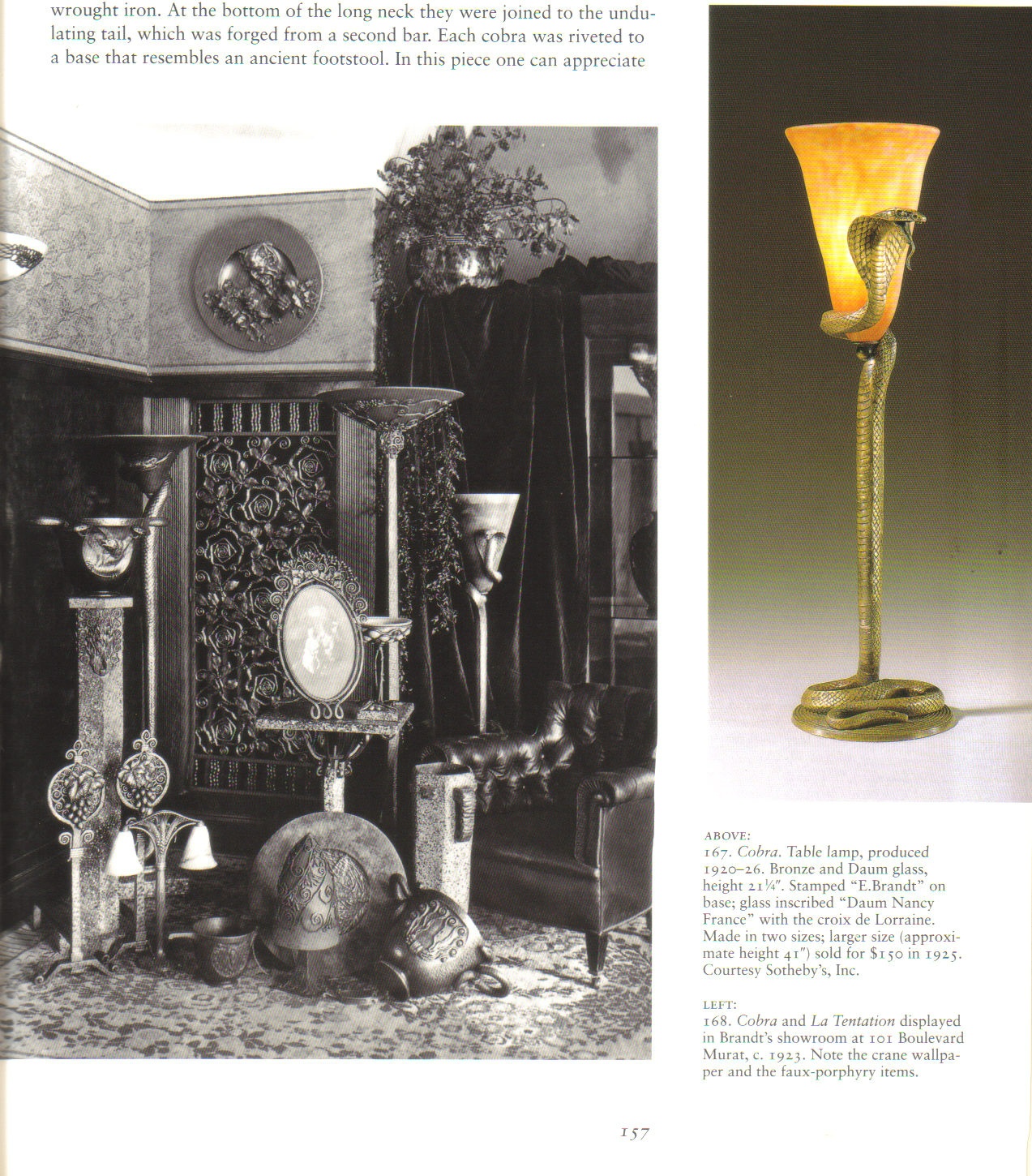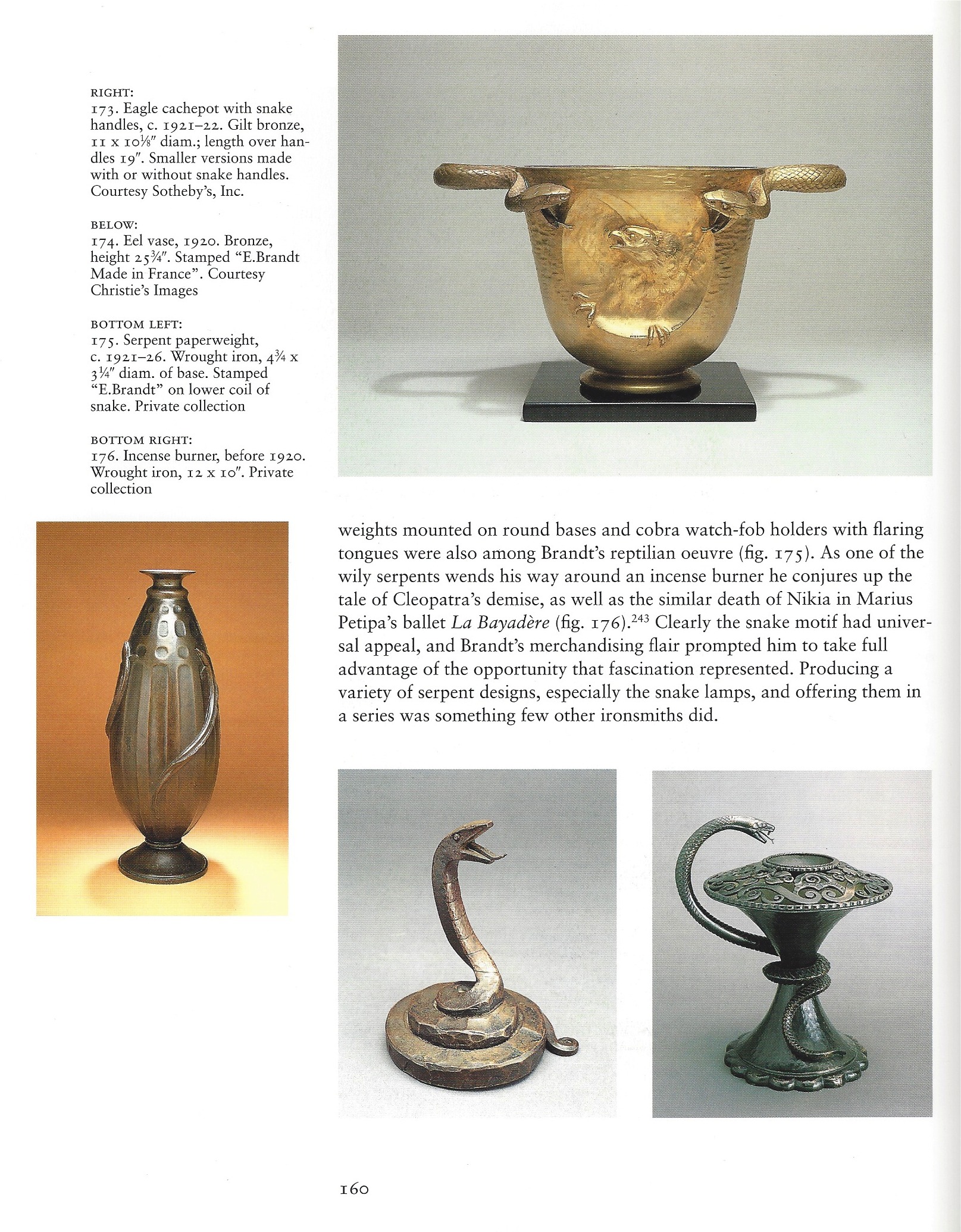Stamped E. BRANDT
5 ⅛ in (13 cm) high, 5 ½ in (14 cm) diameter
Provenance
The collection of Steven A. Greenberg
Born in Paris in 1880, Edgar Brandt was educated at the Ecole Professionel de Vierzon. At the age of 18, he graduated as Brevet Technicien Superieur and served two years in the 153rd infantry in Nancy. During this period, he observed that the French infantry did not have light versatile long target-range weapons. He returned to Paris with an order to produce a 60mm mortar and ammunition. His subsequent design, and those for 81mm, and 120mm mortars, was widely copied throughout the First and Second World Wars. In 1902, Brandt opened his business producing ironwork and light armaments. In 1908 he was awarded a medal at the Salon of the Société des Artistes Français.
Brandt’s exceptional talent lay in the combining and decorative treatment of different metals to stunning effect. For example, he would complement wrought iron with bronze or steel, and would patinate the metals in a rich variety of tones including gold and silver. He was a leading force during a period of great achievement in French decorative arts and design, creating an entirely new aesthetic for the medium of wrought iron. At the age of 29, he was hailed as the rising star of metalwork design by the influential publication Art et Decoration. In 1919, after inheriting a machine shop from his father, Brandt opened a studio with the help of 30 metalworkers and designers as well as the architect Henri Favier. He participated in the famous Exposition Internationale des Arts Décoratifs in 1925 in Paris, where he was a major focal point. As Brandt’s popularity grew he accepted more commissions to produce custom work for private houses and apartments.
The snake motif had enjoyed popularity in French decorative arts since the 19th century and became ubiquitous in the 1920s. Artists such as Lucien Falize and René Lalique fashioned jewellery with snakes’ heads and bodies during the Art Nouveau period. Jean Dunand exhibited copper vases flanked by cobras and individual bronze sculptures of snakes in 1913 and 1919. Brandt would have been stimulated by these works to produce his own decorative variation of the snake form, which included lamps, vases and andirons.
Visual representations of snakes may be traced back to the Palaeolithic period. Snakes were worshipped in many ancient cultures, including those of Egypt and Greece, where they had religious significance. Egyptian pharaohs wore the uraeus, the figure of the sacred asp or cobra, on their crowns, and uraei were depicted in temples and tombs to ward off enemies. For the decorative artist, the snake is an evocative motif that is also malleable and may be twisted into handles or lengthened for lamps or vases. The shape and dramatic form of the snake lent itself to expression in bronze, as Brandt and his designers recognised.



















